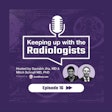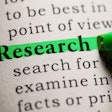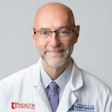
Less than half of medical students have positive associations when it comes to the field of radiology, but their attitudes change when they're given more information about the specialty, according to a study published September 22 in Academic Radiology.
Education about radiology is key to changing medical students' perceptions, wrote a team led by Dr. Lars Grimm of Duke University in Durham, NC. They offered a half-dozen suggestions for how to change attitudes.
"[It's] clear that students enter medical school with very few preconceived notions of radiology," the group wrote. "This provides excellent opportunity for radiologists to craft medical student perceptions and avoid false stereotypes."
Radiology doesn't get much attention in medical school curricula, the authors noted: Only 16% of medical schools require students to undergo a clerkship in radiology during their clinical training, and often other exposure to the field is indirect.
Grimm and colleagues sought to explore medical students' perceptions of radiology and whether more education about the specialty could change those perceptions, developing a survey given to 49 medical students with varying levels of exposure to the field of radiology. The survey solicited participants' opinions, perceptions, and stereotypes they held about the specialty, rated on a five-point scale; depending on their clinical year, students had a range of exposure to radiology, from none or indirect to direct.
Less than half of survey respondents -- 42% -- had positive associations with radiology, the authors found. Positive stereotypes included the belief that radiology had flexible work hours, high salary, good lifestyle, and the opportunity to work with emerging or advanced technology compared with other specialties. Negative stereotypes were perceptions that radiology's contributions were not recognized by other clinicians, that radiologists were "basement dwellers," and that there was a lack of patient interaction in the field.
Artificial intelligence (AI) was a common topic, with participants who had negative opinions about radiology expressing concern that AI would affect the specialty's long-term viability, and those with positive opinions expressing an optimistic attitude toward the use of AI in the field.
Yet in contrast to some of the negative stereotypes, particularly those regarding radiologists' role in the hospital, survey participants generally agreed that "radiology serves as the bedrock of patient care in the health system given the role in disease diagnosis, surveillance, and management," Grimm's group noted.
In general, more education about the field improved students' perception of it, with participants responding to the question, "How has your opinion of radiology as a career option for you changed since you started medical school?" with "somewhat more negative" (8%), "no change" (25%), "somewhat more positive" (48%), and "much more positive" (19%).
Grimm and colleagues concluded with a number of suggestions for how radiology might change medical students' perceptions of the specialty:
- Increase exposure to the field during the first year of medical school
- Show the breadth of radiology practice
- Address false stereotypes in conferences and informal conversations
- Offer educational resources on the use of AI in radiology
- Establish mentorship programs to encourage student research
- Provide information about radiology residency programs
These strategies will prove effective over the long haul, the authors wrote.
"Although these proposed [strategies] will require significant time and effort from radiology programs, they will help to ensure the future of our field by facilitating the recruitment of well-informed and motivated medical students," they concluded.




















